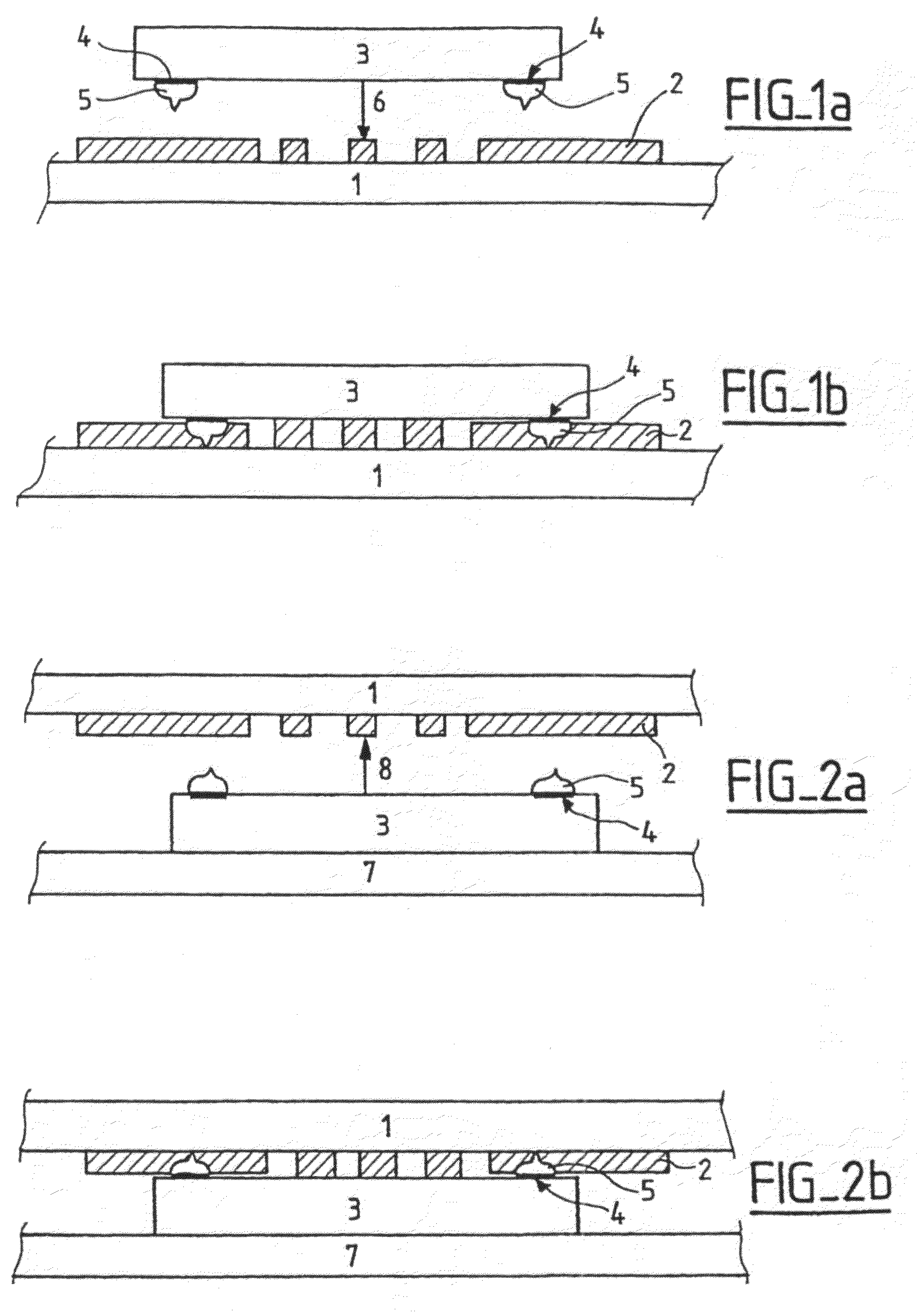Contactless transponder
a transponder and contactless technology, applied in the field of smart card manufacturing, can solve the problems of mechanical strength and tensile fragility of the connection, the protrusion suffers damage affecting the quality of the electrical connection, and the card thickness is reduced, so as to facilitate the penetration of the protrusions and soften the antenna material
- Summary
- Abstract
- Description
- Claims
- Application Information
AI Technical Summary
Benefits of technology
Problems solved by technology
Method used
Image
Examples
Embodiment Construction
[0021]FIGS. 1a and 1b depict a chip 3 during its mounting on an antenna 2. The interconnection assembly formed by the chip 3 and antenna 2 is intended to be inserted in a contactless smart card of ultrafine thickness less than the standard ISO thickness.
[0022]A preliminary step of the manufacturing method according to the invention consists of forming metallised protrusions 5 on contact pads 4 on the chip 3. The protrusions 5 are intended to provide the electrical connection between the chip 3 and antenna 2. They are consequently necessarily produced from a conductive material. They may for example be produced from gold, or from a polymer material loaded with metallic particles.
[0023]Preferably the protrusions 5 are produced on two contact pads 4 on the chip in order to be able to produce a connection on conductive areas of the antenna 2 situated at its ends.
[0024]Given that the protrusions 5 are intended to be embedded in the thickness of the antenna 2, they preferably have a thick...
PUM
 Login to View More
Login to View More Abstract
Description
Claims
Application Information
 Login to View More
Login to View More - R&D
- Intellectual Property
- Life Sciences
- Materials
- Tech Scout
- Unparalleled Data Quality
- Higher Quality Content
- 60% Fewer Hallucinations
Browse by: Latest US Patents, China's latest patents, Technical Efficacy Thesaurus, Application Domain, Technology Topic, Popular Technical Reports.
© 2025 PatSnap. All rights reserved.Legal|Privacy policy|Modern Slavery Act Transparency Statement|Sitemap|About US| Contact US: help@patsnap.com


